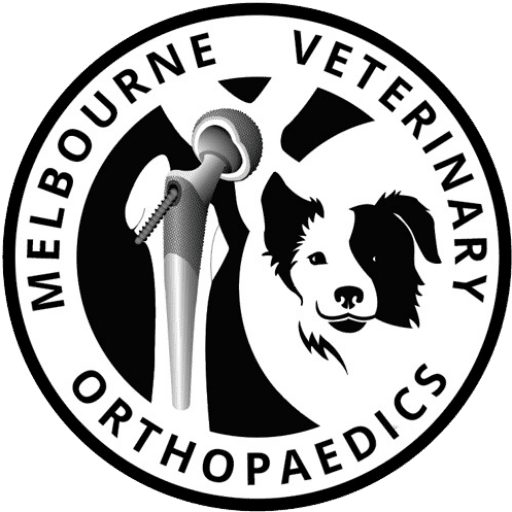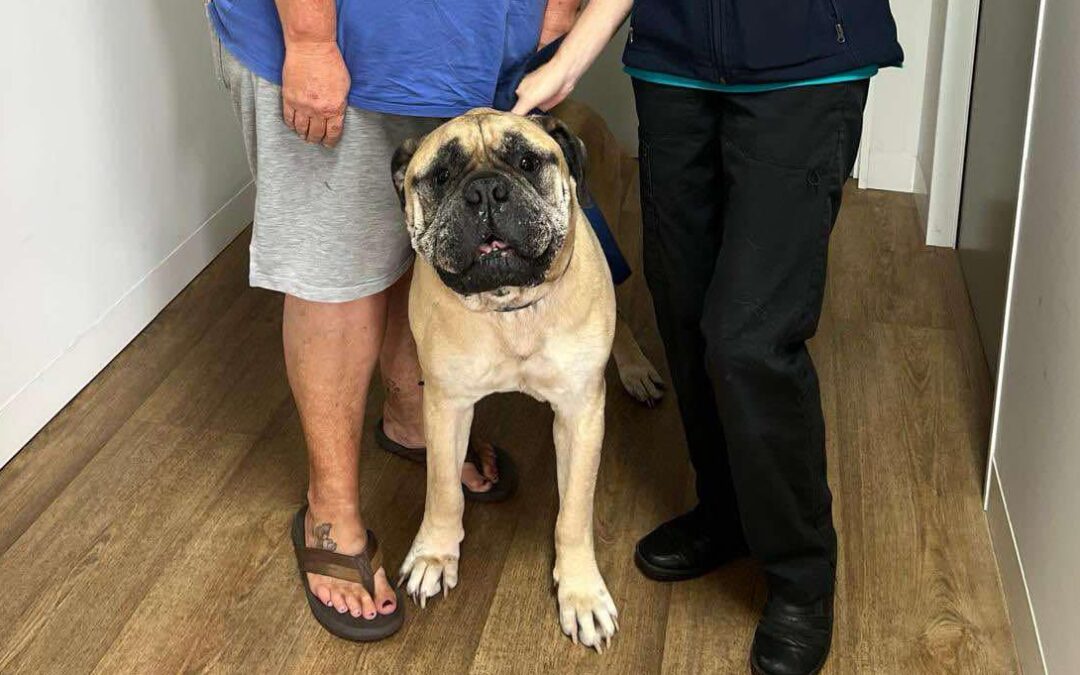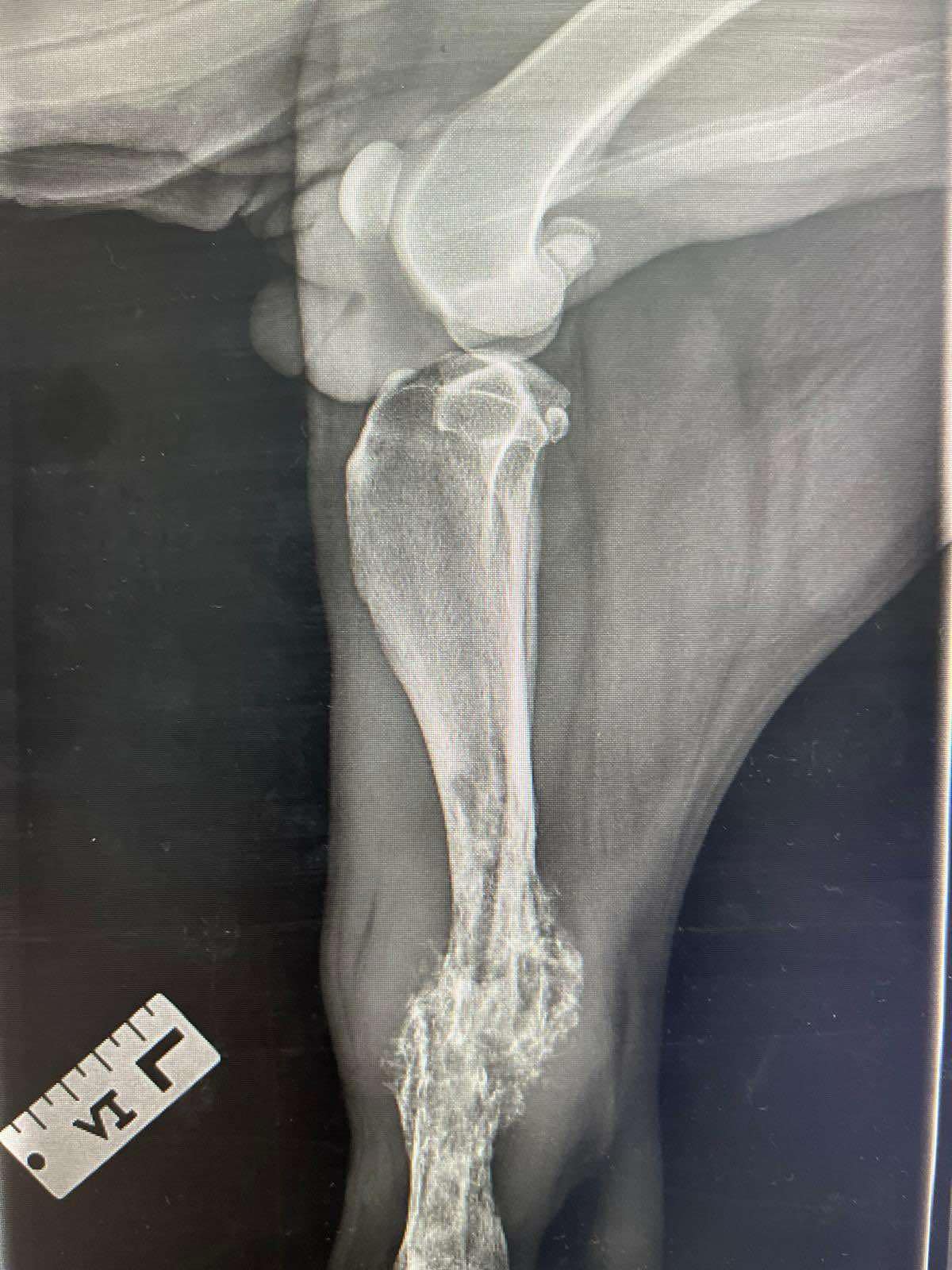
This x-ray shows an advanced bone cancer, structurally weakening the bone, which resulted in a pathological fracture.
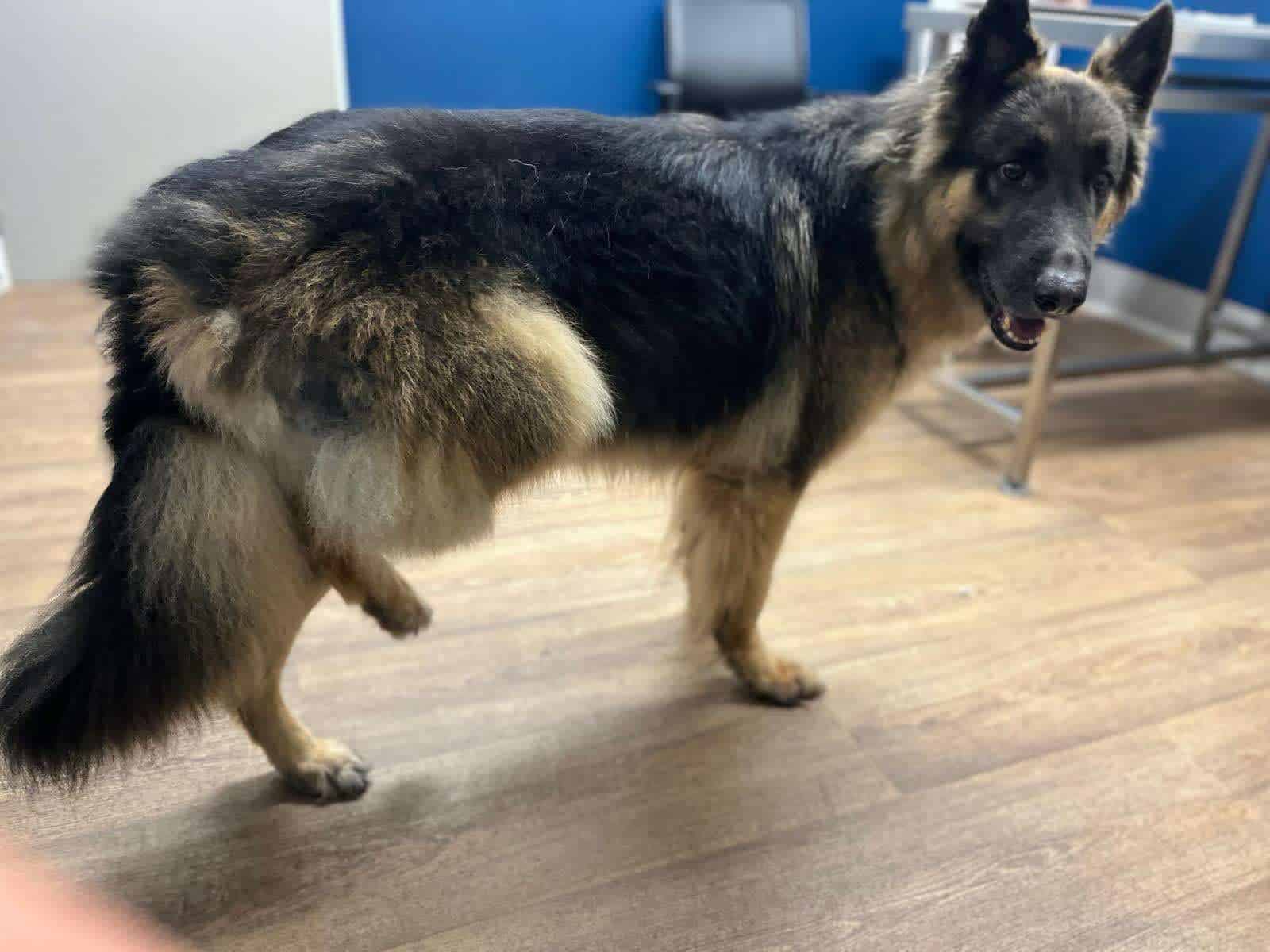
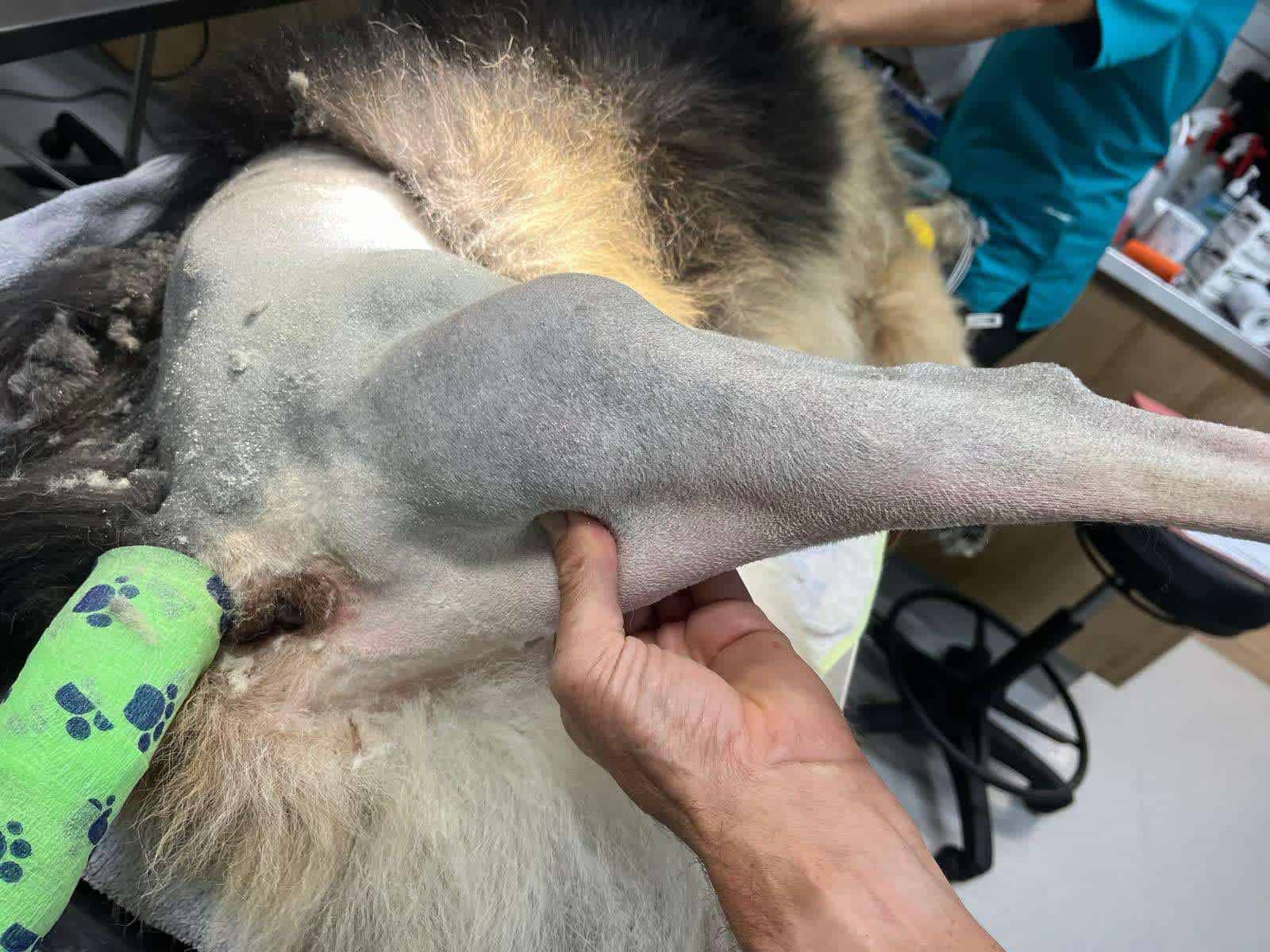
This German Shepherd had chronic progressive undiagnosed lameness, Dr Chris diagnosed a bone cancer.
Dr Chris had to amputate the front leg due to bone cancer
Dr Chris had to amputate the front leg due to bone cancer
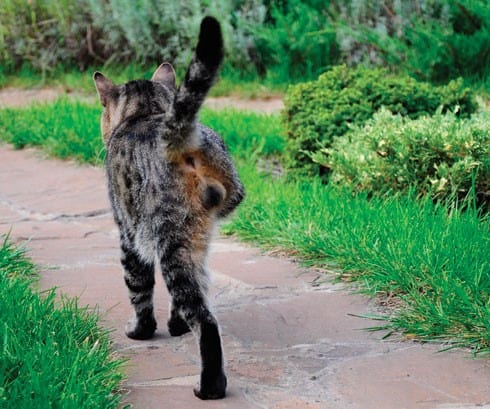
Complications and owner satisfaction associated with limb amputation in cats: 59 cases (2007–2017)
Background
Limb amputation may be recommended in domestic cats following a severe injury or disease. The purpose of the study was to report the signalment, the complications, recovery outcome, owner satisfaction and expectations of domestic cats following limb amputation.
Results
Medical records of 3 specialty hospitals were reviewed for cats that received a single limb amputation in a 10 year period (2007–2017). These cat owners were contacted, and 59 owners completed surveys, comprising the study population. The most common reasons for limb amputation were neoplasia (54.2%, 32/59), traumatic injury (40.7%, 24/59), bone or joint infection (3.4%, 2/59), and thromboembolism (1.7%, 1/59). Thirty-four cats (57.6%) had postoperative complications. Of the fifty-nine surveys, 52.5% reported minor complications and 5.1% reported major complications. There were no differences in postoperative complication rates for thoracic versus pelvic limb amputations. All owners reported either excellent (77.9%, 46/59), good (20.3% 12/59), or fair (1.7%, 1/59) satisfaction with the procedure. Based on their previous experiences, 84.7% (50/59) of owners would elect limb amputation if medically warranted for another pet. The remaining 15.3% of owners who would not elect limb amputation again had experienced death of their pet with a median survival time of 183 days.
Conclusion
Owners reported a positive satisfaction when considering complications, recovery outcome, and expectations. This study can be used by veterinarians to guide cat owners in the decision making process of limb amputation.
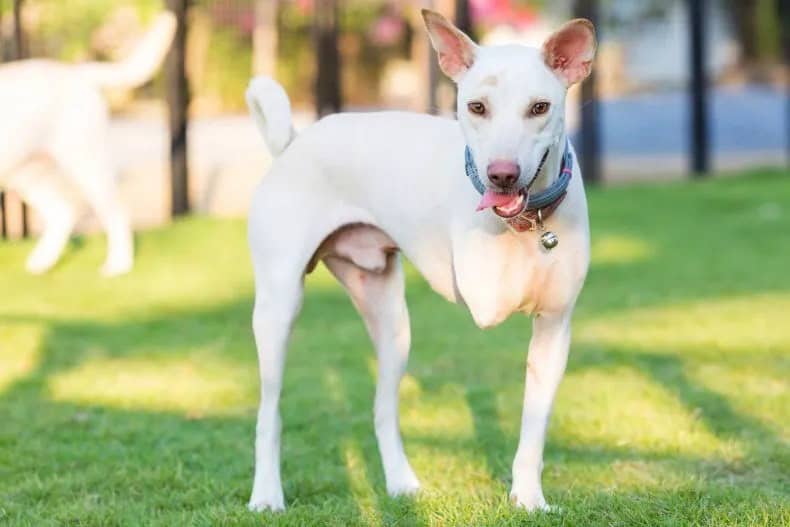
Outcomes of dogs undergoing limb amputation, owner satisfaction with limb amputation procedures, and owner perceptions regarding postsurgical adaptation: 64 cases (2005-2012)
Objective: To evaluate outcomes of dogs and owner satisfaction and perception of their dogs' adaptation following amputation of a thoracic or pelvic limb.
Design: Retrospective case series.
Animals: 64 client-owned dogs. Procedures-Medical records of dogs that underwent limb amputation at a veterinary teaching hospital between 2005 and 2012 were reviewed. Signalment, body weight, and body condition scores at the time of amputation, dates of amputation and discharge from the hospital, whether a thoracic or pelvic limb was amputated, and reason for amputation were recorded. Histologic diagnosis and date of death were recorded if applicable. Owners were interviewed by telephone about their experience and interpretation of the dog's adaptation after surgery. Associations between perioperative variables and postoperative quality of life scores were investigated.
Results: 58 of 64 (91%) owners perceived no change in their dog's attitude after amputation; 56 (88%) reported complete or nearly complete return to preamputation quality of life, 50 (78%) indicated the dog's recovery and adaptation were better than expected, and 47 (73%) reported no change in the dog's recreational activities. Body condition scores and body weight at the time of amputation were negatively correlated with quality of life scores after surgery. Taking all factors into account, most (55/64 [86%]) respondents reported they would make the same decision regarding amputation again, and 4 (6%) indicated they would not; 5 (8%) were unsure.
Conclusions and clinical relevance: This information may aid veterinarians in educating clients about adaptation potential of dogs following limb amputation and the need for postoperative weight control in such patients.
